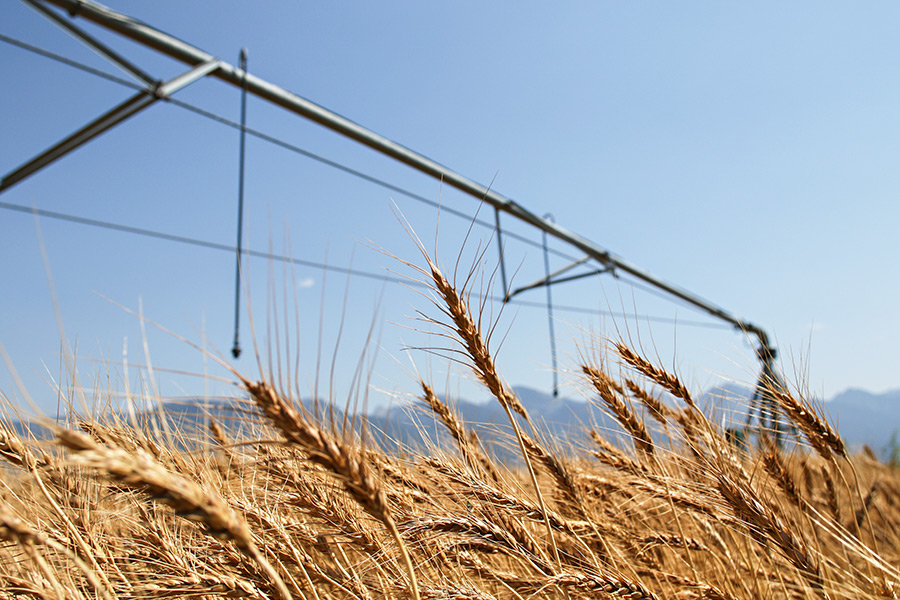After heavy rain brought historic flooding this spring that Flathead County had not seen since 1975, farmers in the region are noticing a range in commodity crop yield this harvest season, with winter wheat well above average and canola crops seeing mixed yields throughout the valley.
“The winter wheat crop in the valley was the best crop that we have seen,” Heritage Custom Farming owner Tryg Koch said. “It was very, very good.”
Since winter wheat is seeded in the fall, the root systems were more mature and able to tolerate the heavy rain and cold temperatures, benefiting from the moisture, while crops like spring wheat and canola that are planted in the spring suffered from stress, Koch said. The excess water also resulted in a loss of nitrogen in the soil, which impacted spring-seeded crops the most.
Overall, Koch said his spring wheat and canola crops had a roughly 20% lower yield than average while pulse crops like peas were down about 10%.
“Anything that was seeded in the spring was down close to 20% around the valley because of that cold snap and we had so much water early on,” Koch said.
A cold spring followed by hot weather over 90 degrees this July did not benefit his spring crops, Koch said, and many of his canola experienced “pod blasting,” which results in no yield and is caused by heat stress.
At the Northwestern Agriculture Research Center in Creston, superintendent Jessica Torrion said she typically prioritizes canola crops because the prices have been consistently higher in the last three years.
“We are putting more canola in the ground,” Torrion said. “I believe the higher prices are related to supply and demand and I feel like during the pandemic there was a shortage.”
Winter wheat prices, which are about $9 per bushel, have also been higher than spring wheat prices, and since they typically produce more yield, Koch is planning to double his acreage of winter wheat this fall.
Torrion is also planning to focus on winter wheat because the crop doesn’t use as much fertilizer, which has experienced volatile prices since the war in Ukraine began.
This spring fertilizer prices spiked after Russia and Belarus suspended potash exports used to produce fertilizer, which accounted for more than 40% of exports, according to Canadian government data.
“Spring wheat needs more protein, which requires more nitrogen” Torrion said. “A lot of farmers have to add more and I heard that north of the lower valley area, the fields were planted with more winter wheat and they made that decision because the price of winter wheat is higher than spring wheat.”
Koch says urea fertilizer prices were down to about $700 per ton this summer from $1,100 this spring, which he suspects is because of slower war activity in Ukraine this summer. But now, prices are going back up to about $850 to $950 per ton.
“During the summer, you didn’t hear as much about the Ukrainian war – product was being shipped through the Black Sea,” Koch said. “Now, Russia has ramped stuff up and wheat and urea have all gone back up … Everything really tracks on the global market supply. It’s something that’s hard to see when we are in the little town of Kalispell.”
Torrion on the other hand says it’s tough to say what’s driving the prices, but she hopes that prices drop.
“The good news is, farmers planted winter wheat, which is a good reaction to high fertilizer prices,” Torrion said.
